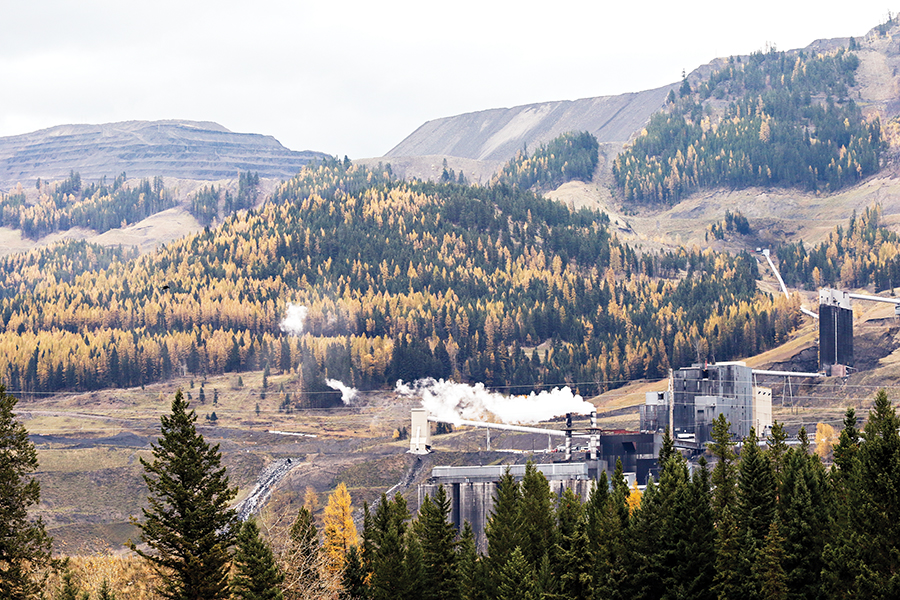A British Columbia coal mine located on a Canadian waterway that spills south across the international boundary into Montana must pay $1.4 million for polluting a tributary of the Elk River and causing the death of dozens of native trout.
The Vancouver-based mining behemoth Teck Resources Ltd. pleaded guilty Oct. 5 in a B.C. Provincial Court, admitting to three counts of violating the federal Fisheries Act. The environmental charges were filed after a problem with the company’s West Line Creek water treatment facility north of Sparwood resulted in the death of dozens of westslope cutthroat trout and bull trout in 2014.
The court ordered Teck to pay the fine to the Environmental Damages Fund, which will be used for fish protection and conservation in the East Kootenay region of B.C.
Teck Resources has also been ordered to post information on the conviction to its website, and it will be added to the Environmental Offenders Registry, where it already appears for three earlier fishery act violations.
The recent charges were filed after federal enforcement officers with Environment and Climate Change Canada discovered that a Teck mine was releasing toxic effluent harmful to fish at its facility on Line Creek, a waterway on the Elk River, which eventually flows into Lake Koocanusa, the sprawling reservoir that straddles the U.S.-Canada border in Montana. For years, mining pollutants including selenium have been spilling from the waste rock at Teck’s coal mine and crossing the international border, increasing the levels of toxic pollutants in Montana.
Following the Line Creek incident, Teck said it launched an extensive investigation and has implemented numerous measures to prevent a recurrence, including improved monitoring and incident response programs, additional process controls and creation of an effluent buffer pond.
The company said it took full responsibility for the fish deaths, which it believes was caused by high levels of nitrite, ammonia, hydrogen sulfide, and phosphorous “unintentionally discharged into the water during commissioning of the facility.”
“From the outset we took full responsibility for this incident and recognize that we need to do better,” said Robin Sheremeta, senior vice president for Teck. “Following this occurrence in 2014, we undertook a full investigation and implemented a number of steps to ensure this does not happen again. We are committed to working hard to continually improve our environmental performance and ensure the environment where we operate is protected.”
But watchdog groups and scientists who have been monitoring the situation say the Line Creek fish kill is just one example of Teck’s environmental irresponsibility that is jeopardizing the health of world-class fisheries downstream.
“The fish populations in the Elk and Kootenay watersheds are world-renowned,” said Robyn Duncan, executive director of Wildsight. “A central principle of good management is that polluters should pay, but this failure points to much larger, longer-term water pollution issues in the Elk Valley and the Kootenay River.”
(The “Kootenay River” becomes the “Kootenai River” once it crosses into Montana.)
Teck’s Line Creek facility is the first of many planned water-treatment facilities designed to remove selenium, which causes birth defects and reproductive failure in fish, amphibians and other aquatic species, from water flowing into the Elk River watershed and then into the Kootenay River. Beyond the 2014 incident, there are ongoing issues with the treatment plant technology. Selenium-containing waste rock, expected to leach the pollutant for centuries, continues to pile up at Teck’s five Elk Valley coal mines.
“While much effort has gone into tackling the issue of dangerous selenium contamination running off from waste rock dumps at the Elk Valley coal mines, the problem is still far from solved,” Duncan said. “This 2014 failure and other ongoing issues at the Line Creek water treatment plant show that the selenium problem needs much more attention.”
Duncan echoed the calls by a transboundary coalition of Native American tribes for a binational commission with Canada and the U.S. to address selenium and other water quality issues that flow from the Elk Valley into Montana rivers.
“Our rivers deserve the best possible protection, and the status quo simply isn’t good enough,” Duncan said.
